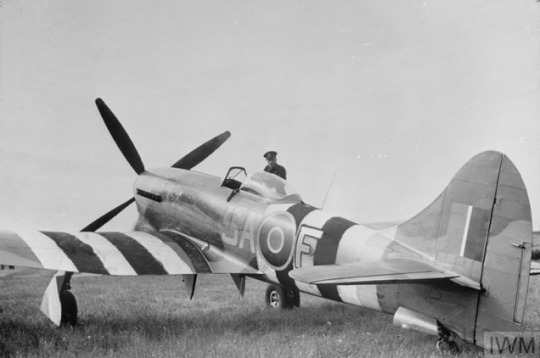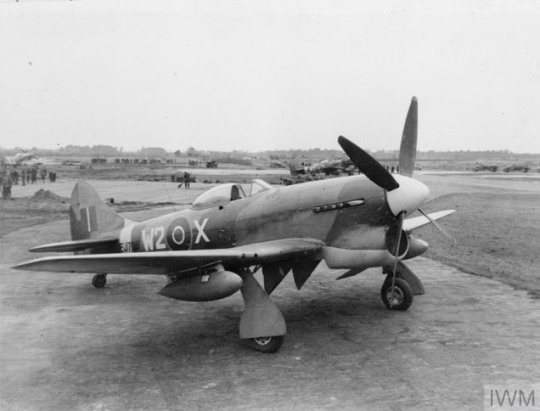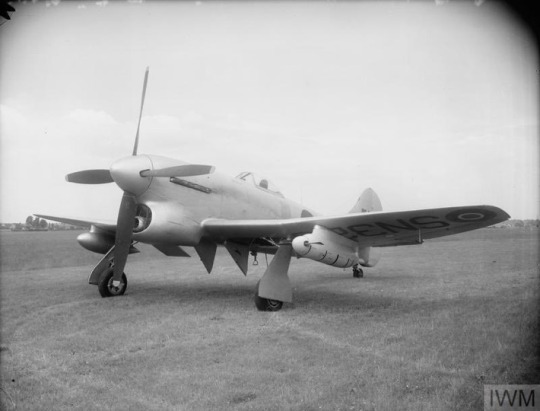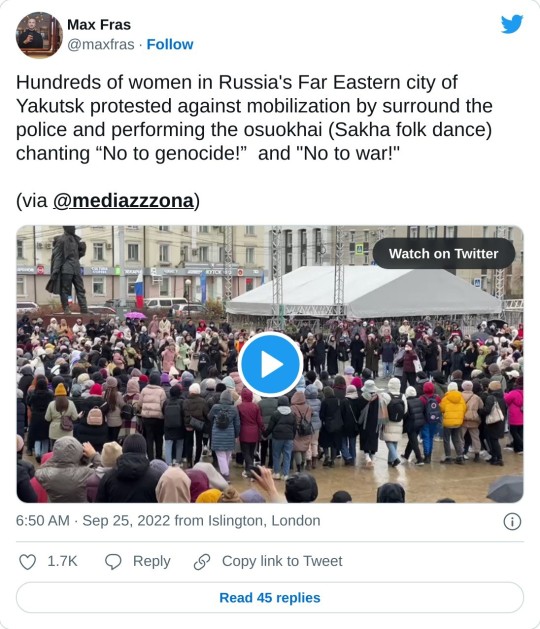#frontline 59
Text

50 notes
·
View notes
Text
Hey guys it's okay that you're upset about F59 being a PS5 exclusive, but please stop and think for a fucking second before you reviewbomb and shit on the devs.
D2 got literally multiple millions of dollars for this deal, with which they will fund loads of future content.
Don't get me wrong, I'm upset that I won't be able to play it. But don't be stupid.
36 notes
·
View notes
Text
Project Wingman (Spoilers)
I will try to keep spoilers minimal.
With the DLC now available on PS5 (really hoping it's just a limited exclusivity period and it goes to PC SOON tm) there's a popular fan theory that the McGuffin that is mentioned is a nuclear weapon, some ancient thing that is powerful and therefore revered. I believe that this theory is wrong, I blame fallout for the idea but it's been 400 years since the calamity nukes have a shelf life by the time the game takes place any weapon produced before the game started would be useless. I need to look through a story again to reconfigure what my full theory is but the nuke thing has just been bugging me.
4 notes
·
View notes
Text
71 notes
·
View notes
Photo

You Don't Play, You Volunteer
'Medal Of Honor: Frontline'
PlayStation 2
40 notes
·
View notes
Text
Driver is the real babygirl of the bunch. Baby Driver if you will
4 notes
·
View notes
Text
GC23: Project Wingman: Frontline 59 - VR-himmelen venter på deg
I en tid hvor virtuell virkelighet (VR) spill dominerer den digitale sfæren, tar “Project Wingman: Frontline 59” opplevelsen til uovertrufne høyder—bokstavelig talt. Etter å ha fått muligheten til å prøve spillet under Gamescom 2023, kan det spennende potensialet av denne tittelen ikke overdrives.
Høyoktan Luftkamp
Styr gjennom den elektrifiserende verden av luftkrig i Project Wingmans nyeste…

View On WordPress
0 notes
Text
Masterlist Tech as a father
In this story, you can follow Tech as he navigates the biggest mission of his life. Being a father. Not truly single and alone. He has his brothers to help, and the mother of Orion. (Jedi!OC) But Amanda has to stay away, to keep herself and Orion safe. And yet Tech has to be vigilant because the Kaminoans are interested in Orion. Precisly in the half clones genetic makeup.
Tech as a father:
Chapter 1: The tiny surprise
Chapter 2: The excited uncle
Chapter 3: Property claim
Chapter 4: Little Soldier
Chapter 5: Some banter and disgust
Chapter 6: Fears
Chapter 7: Sleepless nights
Chapter 8: The presistence of the Kaminoas
Chapter 9: Secret revealed
Chapter 10: Throwing up
Chapter 11: Honey and confusion
Chapter 12: The destroyed snactuary
Chapter 13: Baby on the frontline… again
Chapter 14: Hidden feelings
Chapter 15: Moment to be seen
Chapter 16: Bittersweet goodbyes
Chapter 17: New found mobility
Chapter 18: A different kind of betrayal
Chapter 19: Protective
Chapter 20: Increasing mobility can cause pain
Chapter 21: Searching the missing parent
Chapter 22: Trying to be strong
Chapter 23: Different longings
Chapter 24: Digging deeper
Chapter 25: Accidents can and will happen
Chapter 26: Trimming
Chapter 27: Faulty logs
Chapter 28: Security means protection
Chapter 29: Dreams
Chapter 30: Eating habits
Chapter 31: Problem ahead
Chapter 32: Tricky mission
Chapter 33: Diverting attention
Chapter 34 Unsure
Chapter 35: Emotional mission
Chapter 36: Sharing a moment
Chapter 37: Sleepy confessions
Chapter 38: Working alongside
Chapter 39: Stolen moment
Chapter 40: Hair gel is now part of the gear it seems
Chapter 41: Logically subtle
Chapter 42: Precious simplicity
Chapter 43: Projection
Chapter 44: Testing Hunter’s patience
Chapter 45: Strange siblings
Chapter 46: Broken surprise
Chapter 47: The Bunk
Chapter 48: Gentle Giant
Chapter 49: Unwanted care
Chapter 50: Soft hearted
Chapter 51: Seriously Wrecker?!
Chapter 52: Little foodie
Chapter 53: Little offer
Chapter 54: The GAR of stuffed animals
Chapter 55: Orion and the plushies
Chapter 56: Teeth
Chapter 57: Trying to find it
Chapter 58: Teething toys
Chapter 59: Tumble and babyproofing
Chapter 60: Babysitter Gonky
Chapter 61: Back to Callo
Chapter 62: One can’t hide being a parent
Chapter 63: Little Trooper
Chapter 64: Intruder
Chapter 65: Mittens
Chapter 66: Don’t grow up
Chapter 67: Deep clean
If one wants to get taged, just shoot me a message. Or write here in the comments!
Main Masterlist
#tech x reader#bad batch tech#tbb#the bad batch#clone wars#tbb tech#tbb wrecker#tbb crosshair#tbb hunter#tbb echo#tech and orion#tech fluff#daddy tech#tech fanfic#tech fanfiction#the dad batch#the uncle batch#tech as a father
122 notes
·
View notes
Text




2nd September 1942. First flight of the Hawker Tempest fighter. A major redesign of the Typhoon, the addition of a new laminar flow wing led to a significant improvement in performance. Despite a protracted development process, the Tempest emerged as one of the best piston-engined fighters of the Second World War. Fast, manoeuvrable and heavily armed, the type had an impressive impact despite its late arrival.
Though the first kills claimed by Tempests came over Bf109s on 8th June 1944, its main baptism of fire came during the V-1 offensive against southern England. Here, their high speed of over 400 mph was a key asset. Tempests destroyed over 800 V-1s, almost half of the total destroyed by Allied aircraft. A number of pilots amassed impressive individual totals, including Sqn Ldr Joseph Berry of 501 Squadron, with 59, with seven on 23rd July alone.
As the V-1 offensive declined and German forces retreated, Tempests began to operate from airfields on the continent. Designed as high-performance interceptors, they proved a match for any Luftwaffe aircraft, shooting down over 200 including several jets. However, they were also increasingly used for ground attack missions, with their 4x20mm cannon being highly effective against trains and vehicles. Rockets weren’t carried during the war, while only a small number of sorties were flown with 500lb bombs, shortly before VE Day.
In the postwar period, the standard Mark V Tempests were joined - and partially replaced - by the Mark II, an even faster variant equipped with a Centaurus radial engine. There was also the Mark VI, a specialised fighter-bomber with an improved Napier Sabre engine. However, the widespread introduction of jets soon saw a decline in the Tempest fleet and they had left frontline squadrons by 1950. Aircraft converted to target tugs, however, continued to serve until 1955.
Pictured:
1) The first Tempest to fly was Mark V HM595, which shared the tailfin and original ‘car door’ cockpit of the Typhoon. These would change before the type entered service.
📷 baesystems.com
2) The Commanding Officer of 486 Squadron RNZAF, Squadron Leader J H Iremonger, standing by the cockpit of Hawker Tempest Mark V at Newchurch. This unit was part of 150 Wing, sharing the airfield with 3 and 56 Squadrons.
📷 IWM (HU 92148)
3) Tempest of 80 Squadron RAF equipped with drop tanks at a Dutch airfield in late 1944. The unit was primarily flying armed reconnaissance missions, tasked with attacking any targets they encountered in a given area.
📷 IWM (MH 6860)
4) Hawker Tempest TT Mk.5, carrying a target winch pod under the port wing. These aircraft replaced the much slower types previously used as target tugs, such as the Miles Magister.
📷 IWM (ATP 16813B)
@JamieMctrusty via X
11 notes
·
View notes
Text

Driver has at least two speeding tickets canonically, and the cut dialogue indicates they regularly participate in rally racing. No wonder they shot the speed camera in the highway mission lol.
27 notes
·
View notes
Text
Every day I wake up and hope for a world where Frontline 59 is on pc.
9 notes
·
View notes
Text

sSSR【Glasses Frontliners, All Bases Covered】Chiyoko Sonoda
availability:
SEASON PASS
until 2024/03/28 23:59 JST
Best Room: SHOPPING TRIP (RESTAURANT)
SUPPORT EFFECT (at level 80)
Increase MENTAL when in the same appointment with CHIYOKO
Increase chance of SHOPPING TRIP appearing
Decrease chance of Trouble on ALL APPOINTEMENTS
Increase STAMINA RECOVERY when in SHOPPING TRIP (RESTAURANT)
Increase VOCAL&DANCE&VISUAL when in SP LESSON
Increase STAMINA RECOVERY when in DAY OFF
Increase chance of CHIYOKO appearing in SHOPPING TRIP (RESTAURANT)
Increase chance of SUPPORT EVENT occurring
Increase MENTAL when in DANCE LESSON
Increase VOCAL&DANCE&VISUAL when in the same appointment with CHIYOKO
Increase STAMINA RECOVERY when in SHOPPING TRIP (RESTAURANT)
SUPPORT SKILL (at level 80)
Increase INITIAL PLAY POINT in LESSONS by 3
Increase INITIAL PLAY POINT in SP LESSON by 3
Increase INITIAL PLAY POINT in AUDITION by 3
Increase PLAY POINT CAP by 2
Increase MENTAL GUARD by 10
11 notes
·
View notes
Text
September 25th, 2022
The cries for help of Russia's national minorities: "We will stop existing"
"In small villages, with two or three streets, they have taken all the men" • Putin's draft mobilization punishes regions like Yakutia, Buryatia and Dagestan.
On the day after declaring partial mobilization in Russia, a member of the Duma [Russian Parliament] and ex-mayor of Jakutsk, in Siberia, protested that the number of reserves that each region has to send to the front [of the war in Ukraine] didn't match. She asked why regions like Novosibirsk only mobilize 0.27% of the men between ages 20 and 59 and, at the same time, Yakutia has to mobilize 1.66%. In addition, she added, why are precisely the most disadvantaged towns of the north of Yakutia where the proportion of men called to war is higher? "In villages of the Artic, with 300 inhabitants, they take 47 men. I know what it means to live in the north at -55°C [-67°F] and, without the men, families will have a very hard time. What is the logic behind these numbers? What kind of proportionality are we talking about?"
Yakutia, located north of the permafrost and almost 8,500 km away from Moscow, is a land rich in natural resources (diamonds, uranium, hydrocarbon...) and the immigration of workers for the extraction businesses has left Yakuts and Evens, the indigenous peoples, as a minority in the cities of the centre and south of the Republic. On the other hand, they are the majority in the towns of the north, from which they are now being sent en masse to the frontline.
We have talked to Aanis, a girl from a town of 500 inhabitants where 35 men have been called to war: "They've taken almost all young men from the town, of local ethnicities (Evens and Yakuts). It was very unexpected, nobody could have seen something like this coming. Before the mobilization, people from the town were not interested in the war, it's hard enough to survive. We were worried about everyday problems: hunting, how the vegetables were growing... Now everything has changed, we are shocked."
Nikolai, a man from a village in the north of Yakutia, answers resolutely when we ask what has happened: "We had never seen before what is happening now, not even in the Second World War. They have sent all the native men to the front." I ask him for more details: "My village is inhabited only by Yakuts and Evens. We're less than 500 people, out of which only 154 are of working age, including women. They have called to the front 65 people, almost all the men between ages 18 and 60." He adds that families don't know how they will survive this winter. "It reaches -60°C [-76°F], and we don't have centralised heating or water pipes. We use ovens to warm up and it's usually men who take care of that. We live from hunting. Who will hunt now? What will we eat? Nobody knows."
I ask him why does he think the authorities have decided to take them and not others: "Because we live in remote and very small villages, with no Internet; there are no lawyers here or organizations that defend us. Many of us don't speak Russian or English. They probably calculated that mobilizing us would have little repercussion: very few people would notice the absence of some minorities, even if they disappear completely. In fact, there's already few of us left.

Poster calling for a protest of the Free Yakutia Foundation: "Yakutia! Don't cry! RESIST!"
In Yakutia, women have taken the streets to protest. They stand their ground. And they have done so, shouting "no to genocide!"

General mobilization in Buryatia
In Buryatia, a republic in the south of Siberia, bordering Mongolia, with a 35% native population of Mongolian origin (Buryats), their situation is just as harsh. "The mobilization in Buryatia is general, not partial", declares Aleksandra Garmazhapova, founder of a local NGO. Viktoriya Maladaeva, coordinator of the Free Buryatia Foundation, confirms it: "They're not calling up only reserves: they mobilize students, disabled people, and people who have never had any relation with the army. In small villages, with only two or three streets, they have taken all the men. There are families where they've called up the fathers and sons." She explains that many men were taken to the recruitment points during the night: "Then people started calling each other, and those who could drove their car to Mongolia. Others have hidden in the forests, in the taiga."
To answer to this situation, the ex-president of Mongolia (2009-2017) Tsakhiagiin Elbegdorj published the following message: "I know that since the beginning of this bloody war, the ethnic minorities that live in Russia are the ones that have suffered the most: the Mongols of Buryatia, of Tuva and Kalmykia have suffered. They have been used as cannon fodder. We, the Mongols, will welcome you with open arms and hearts. Our borders will stay open."
To the question of why she thinks Buryatia is disproportionately affected by the mobilization, Maladaeva answers without a doubt: "Because we are an ethnic minority and for Putin we are worthless [...] And that's the same in other "ethnic republics": right now we're getting calls from activists from Kalmykia, Chuvashia, Yakutia, Tuva... On the contrary, in the Irkutsk region (where there is a Slavic majority without notable minorities), there's silence, even though it borders us. Why?"
Dead in combat

"Russian victims in Ukraine". Data compiled by Mediazona.
We must highlight that, until Putin signed the decree to mobilize reserves last Wednesday, going to fight in Ukraine was voluntary and paid. Those interested signed a contract with the Russian army and got paid a monthly salary between 130,000 and 200,000 rubles, depending on the region.
These salaries might not be much in Moscow, but they are a fortune in the most deprived areas. In the Russian capital city, the average monthly wage is about 115,009 rubles, three times the average monthly wage in Buryatia. If we look at unemployment rates, we see how it's 1.5% in Saint Petersburg while in Northern Caucasus republics, such as Ingushetia, it's as high as 30%. In the context of these economic inequalities, a result of highly centralized policies that center the economic wealth around the cities where political power resides and regulate the periphery to misery, it's no surprise that Buryats and Caucasians see an opportunity in an army wage, and knowing that in the worst of cases, if they die in combat, their families will receive (in theory) a compensation of 7 million rubles and a pension.
These economic reasons explain, in part, why the two regions with the most soldiers who died in combat in Ukraine are Buryatia and Dagestan (in the northern Caucasus). According to official data compiled by the Russian news portal Mediazona, 6,219 Russian soldiers have died in total in the war in Ukraine. From Buryatia, 256 have died (out of a total of 1 million inhabitants), and from Dagestan, 292 (out of 2.5 million inhabitants). These numbers contrast highly with the 17 dead soldiers from Moscow (12 million inhabitants) or the 49 deaths from Saint Petersburg (5 million inhabitants).
"We are the empire's trash"
Another factor that deepens the marginalization of minorities in Russia, that could have contributed to their disproportionate enlistment, is the prevailing racism in Russian society. Maria Viushkova, analyst of the Free Buryatia Foundation, declared in an interview: "The best alternatives in Buryatia for finding a job are either emigrating to South Korea or joining the army. For us, it's difficult to find work in other regions of Russia, where Buryats have to face discrimination and racism: they don't hire them, they don't house them, they limit their education. Often, Buryats who have tried their luck in other regions of Russia are forced to come back."
Aslan is a man from Kabardino-Balkaria, near Dagestan. He confirms that racism towards Caucasians is noticeable in Moscow, where he worked in some years: "It's constant. At work, first they looked badly at me, it took them a while to trust me. And when they knew me well, sometimes they spoke badly of Caucasians using a slur that they use to define us, "chernojopie" (black butts), not even realising I was there. In the subway, I have had problems with nationalists because of my looks. And my child has had quarrels with his friends for not being "Russian".
I ask him why he thinks it's them and Siberian minorities who are the most affected by this war. He's resolute: "Because we are the empire's trash to the Kremlin, and this is a way to get rid of us." And he adds: "But I don't understand why the Northern peoples don't rebel against Moscow, the empire has also wanted to destroy them. I think mobilization hasn't been as numerous in our republics in the Caucasus as it has in the Far East because they don't dare to, they know we'll stand up to them."
Aslan is probably right. The Caucasus is a potentially explosive region, where there was for years a Jihadist armed group made of young radicalized people with no hopes for the future. Authorities are not interested in feeding discontent and rage among these young people.
But in the Far East and in Siberia the situation is different, and the natives make a request of us. When I asked Nikolai, from the village in Yakutia that has been left with no young men, how could we help them, he said: "Please, report about the minority nations. If all men go to war, the genetic reserve of our people will be gone. In 20 years, or 40 years, our language will also go extinct. We will stop existing."
#war in ukraine#ukraine invasion#national minorities#ethnic minorities#russia#racism#yakutia#buryatia#dagestan#siberia#indigenous#evens#yakuts#tuva#kalmykia#kabardino-balkaria#caucasus#stateless nations#💬#genocide
239 notes
·
View notes
Text
20 notes
·
View notes
Text
📝Scout! Frontline Watchdogs will start soon!
⏰Time: 2023/09/15 12:00 PM - 09/25 11:59 PM (GMT-5)
⭐️There is a higher chance to obtain the featured cards in this scout.
For details, please check the in-game notice!




12 notes
·
View notes
Text
Si al Yasuni 💗
From NACLA.org: On August 20, Ecuador made history with a 59 percent vote in support of a popular referendum to stop petroleum drilling in the Yasuní National Park, one of the most biodiverse areas on the planet. “It’s an example not just for Ecuador, but for the world,” said Alexandra Almeida of Acción Ecológica, an environmental organization based in the capital of Quito.
Keeping oil in the ground in Yasuní will save 410 million metric tons of greenhouse gasses— equivalent to the annual emissions of France—from entering the atmosphere. The vote marks a triumph for the country’s grassroots anti-extractivist, ecological, and Indigenous movements, whose road to victory comes from a decade of social and political conflicts over extractive industry policies.
Yasuní National Park is in part located in Waorani ancestral territory. It is also a unique area where South America’s richness of plant, amphibian, bird, and mammal species overlap, boasting the highest levels of biodiversity per square meter in the world. Over 150 threatened species reside there. Three Waorani groups—the Tagaeri, Taromenane, and Dugakeaeri—remain in voluntary isolation and are considered “uncontacted peoples.” Oil activity has driven illness, food insecurity, and massacres in the area


Waorani leader Nemonte Nenquimo shows hands stained with oil from a nearby spill in the province of Sucumbios, Ecuador, on June 26 [Courtesy of Sophie Pinchetti/Amazon Frontlines]

Napo river, Yasuni

18 notes
·
View notes